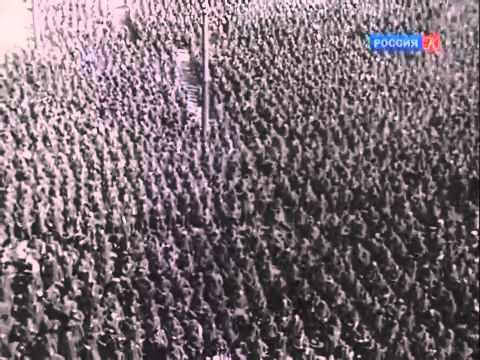Approximately three million German prisoners of war were captured by the Soviet Union during World War II, most of them during the great advances of the Red Army in the last year of the war. The POWs were employed as forced labor in the Soviet wartime economy and post war reconstruction.

In the first months of the Soviet-German war, few Germans were captured by Soviet forces. After the Battle of Moscow and the retreat of the German forces the number of prisoners in the Soviet prisoner of war camps rose to 120,000 by early 1942. The German 6th Army surrendered in the Battle of Stalingrad, 91,000 of the survivors became prisoners of war raising the number to 170,000 in early 1943. Weakened by disease, starvation and lack of medical care during the encirclement, many died of wounds, disease (particularly typhus), malnutrition and mistreatment in the months following capture at Stalingrad; only approximately 6,000 of them lived to be repatriated after the war.As the desperate economic situation in the Soviet Union eased in 1943, the mortality rate in the POW camps sank drastically. At the same time POWs became an important source of labor for the Soviet economy deprived of manpower. With the formation of the “National Committee Free Germany” and the “League of German Officers”, pro-communist POWs got more privileges and better rations. As a result of Operation Bagration and the collapse on the southern part of the Eastern front, the number of German POWs nearly doubled in the second half of 1944. In the first months of 1945 the Red Army advanced to the Oder river and on the Balkans. Again the number of POWs rose – to 2,000,000 in April 1945.
A total of 2.8 million German Wehrmacht personnel were held as POWs by the Soviet Union at the end of the war according to Soviet records. A large number of German POWs had been released by the end of 1946, when the Soviet Union held fewer POWs than the United Kingdom and France between them. With the creation of a pro-Soviet German state in the Soviet occupation zone of Germany – the German Democratic Republic – in October 1949, all but 85,000 POWs had been released and repatriated. Most of those still held in had been convicted as war criminals and many sentenced to long terms in forced labor camps – usually 25 years. It was not until 1956 that the last of these Kriegsverurteilte (‘war convicts’) were repatriated, following the intervention of West Germanchancellor Konrad Adenauer in Moscow.
British historian Richard Overy estimated that 356,000 out of 2,880,000 German prisoners of war died in Soviet labor camps.
According to Edward Peterson, the U.S. chose to hand over several hundred thousand German prisoners to the Soviet Union in May 1945 as a “gesture of friendship”. Niall Ferguson maintains that “it is clear that many German units sought to surrender to the Americans in preference to other Allied forces, and particularly the Red Army”.Heinz Nawratil maintains that U.S. forces refused to accept the surrender of German troops in Saxony and Bohemia, and instead handed them over to the Soviet Union.
According to a report in the New York Times thousands of prisoners were transferred to Soviet authorities from POW camps in the West, e.g. it is known that 6,000 German officers were sent from the West to the Sachsenhausen concentration camp which at the time was one of the NKVD special camp and from which it is known that they were transferred to POW camps . Soviet Ministry for the Interior documents released in 1990 listed 6,680 inmates in the NKVD special camps in Germany 1945–49 who were transferred to Soviet POW camps.
